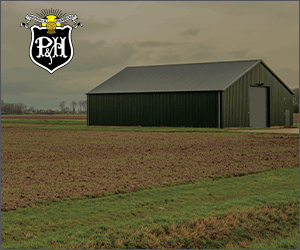The Big Picture: Farming and the War of 1812
WHAT NON-FARMERS ARE SAYING ABOUT FARMING
in june of 1812, the Americans declared war on Great Britain and the British North American colonies. They attempted to invade both Upper and Lower Canada (modern-day Ontario and Quebec) in order to block the entrance up the St. Lawrence River and into the Great Lakes, thereby cutting off the movement of British troops. Invasions were planned at four strategic points: Kingston, south of Montreal, the Niagara region and across from Detroit. The war turned farm fields into battle fields and settlers into soldiers.

colonists at war
It was expected that militiamen would acquire most of their supplies in their area of operation. However, many frontier communities were barely self-sufficient at the time, and most had nothing extra to offer after taking care of their families. As a result, “Upper Canadian militia forces – made up primarily of merchants and farmers – were often left without sufficient clothing, food, or shelter.”i
“Desertion rates were high, and since the punishment for doing so was rarely, if ever, enforced, deserters often far outnumbered men on duty.” ii Desertion rates – as high as 85 percent in some regions – weren’t a symptom of cowardice though. “Like their counterparts in their home and Niagara regions, many militiamen from the east continued to place personal concerns, such as tending to farm matters, ahead of military duty.”iii Many sought permission to protect their property or to take care of their farms; but when permission was denied, they were left with little choice but to sneak away from their posts.
“It was thought that those who did choose to fight would enlist for the duration of the war, but come harvest, more would abandon their posts.” iv And as the war stretched into the spring of 2013, “even the most loyal settlers would eventually resort to desertion in order to plant their crops.”v
severe losses
Attacks in Upper and Lower Canada were widespread, thorough, and disastrous. Homes, barns, livestock, and mills were all burnt to the ground;” a move that the Americans thought would demoralize the inhabitants by making them entirely defenseless.” vi Those farmers who had productive crops, livestock and abundant produce in their gardens were most vulnerable, and not only to the American armies. Aboriginal warriors and British armies stole food from the colonists because they were hungry and their diets were poor. They dismantled fences and barns to use as firewood. The British claimed that they also destroyed items of value to keep them from falling into the wrong hands, “acts that had repercussions for both the colonists and themselves.”vii
In some villages, including Newark (Niagara-on-the-Lake), Dover and Chatham, colonists were left without homes or food for the coming winter. For those who survived, the coming year was one of great hardship as they attempted to rebuild all they had lost — farms, homes, and especially mills. “For a pioneer region these were disastrous events, since mills for grinding represented large investments of money and were central to the economic activities of agricultural societies.”viii
Crops were grown according to weather conditions, and consisted mostly of corn and wheat. They were usually milled locally and provided settlers with staples like cornmeal and flour. Although the value of wheat had increased 133 percent during the war, the profits did not compensate for the inflated price of merchant goods. In York, for example, prices for merchant goods had increased 300 percent.
rebuilding
Great Britain and the United States signed the Treaty of Ghent on December 24, 1814. The end of the war was closely followed by a building boom which created a period of prosperity for many. Workers were paid as much as $1.50 a day, room and board inclusive. As they moved into growing towns, very little farming was done. Making relatively easy money during the years of rebuilding left many Upper Canadians “with no desire to return to the work of clearing bush and tending fields.”ix The war had done more than destroy the settlers’ land and homes – it had changed their way of life.
i George Sheppard, Plunder, Profit, and Paroles: A social history of the War of 1812 in Upper Canada (Montreal & Kingston: McGill-Queen’s University Press, 1994), 69-70.
ii Sheppard, 89.
iii Sheppard, 89.
iv Sheppard, 75.
v Sheppard, 83.
vi Sheppard, 107.
vii Sheppard, 107.
viii Sheppard, 107.
ix Sheppard, 172
FOOD in 1812
Although there are very few records depicting farm life in the early 1800s, pioneer recipe books and housekeeping guides show the types of ingredients that were most often on hand. Crops were grown according to climate conditions, and consisted mostly of corn and wheat. These crops were usually milled locally and provided settlers with staples like cornmeal and flour. Most frontier families enjoyed an abundance of fresh meat, including livestock of pork and beef, as well as poultry. Given the proximity of dense forests and clear streams and lakes, both fresh fish and wild game were especially plentiful. Wealthier families enjoyed the luxury of imported foodstuffs such as tea, wine, coffee, sugar and spices.i During the long winter months, food supplies depended on preservation techniques, such as drying, salting and smoking. Whenever possible, pioneer families stored root vegetables in storage spaces underground.ii
As settlers learned of the protective powers of a diet complete with fruits and vegetables, the early 1800s saw a dietary transformation. Although they sometimes made their way to market, for the most part, fruits and vegetables were grown and consumed on the homestead.iii Catherine Claus of Newark kept an extensive garden book – a record that reveals the kind of foodstuffs grown at the time.
Orchards of peaches, plums, pears, apricots, quince, and apples were dotted throughout the region. The long-lasting Newtown pippin variety and Spitzenburg, a spicy dessert apple, were clear favourites. In the later months of summer, gardens were filled with the heavy scent of ripened melons and black currants.iv
Spring brought early crops of asparagus, green onions, spinach and salad radishes. Greens, including endives, chard, and spinach filled settlers’ salad bowls. As summer progressed, gardens were abundant with sweet peppers, savoy cabbage, okra, marrow fat peas, lima beans, Spanish onions, cauliflower and celery. Settlers grew root vegetables – carrots, potatoes, parsnips and turnips – that could later be stored underground for consumption in the colder months of winter.v
Ladies’ home housekeeping journals boasted recipes of all kinds, some with very basic instructions for fire-cooked crumpets, stuffed fowl, or pot beef. Hannah Jarvis of York (now Toronto) exchanged and collected recipes with friends and neighbours. Her housekeeping journal kept instructions for creating everything from soap to health remedies, dyes for colouring yarn to perfumes. She germinated seeds indoors, planted and harvested vegetables, raised her own poultry, and cured and preserved her own meats. Her recipes included spices and brandy, proof that she lived quite well.vi
Hannah Jarvis’ Plum Pudding
Half a pound of bread crumbs – half a pound Flour, one pound of raisins, three pounds Currants washed and stoned and chopped – seven Eggs – one and a half pound suet chopped fine (if you wish it very rich) otherwise one pound – quarter of an ounce each Mace Cloves, Ginger & a little Nutmeg – Candied Lemon – Orange & Citron each a quarter of an ounce – a glass of Brandy – as much Milk as will just wet the Flour – a little salt. Boil four hours – give little or no room to swell.
i Diane Graves, In the Midst of Alarms: The untold story of women and the war
of 1812 (Cap-Saint-Ignace: Robin Brass Studio Inc., 2007), 423.
ii Graves, 423.
iii Graves, 423.
iv Library and Archives of Canada, Ottawa: MG19 F1, Claus Papers, vol. 4, Garden
Book of Catharine Claus.
v Catherine Claus, Library and Archives of Canada, Ottawa: MG19 F1, Claus
Papers, vol. 4, Garden Book of Catherine Claus.
vi Hannah Jarvis, Archival and Special Collections, University of Guelph Library,
Guelph, Canada: John Macintosh Duff Collection, XRIMSA210088,
Housekeeping book, 19.
•






















